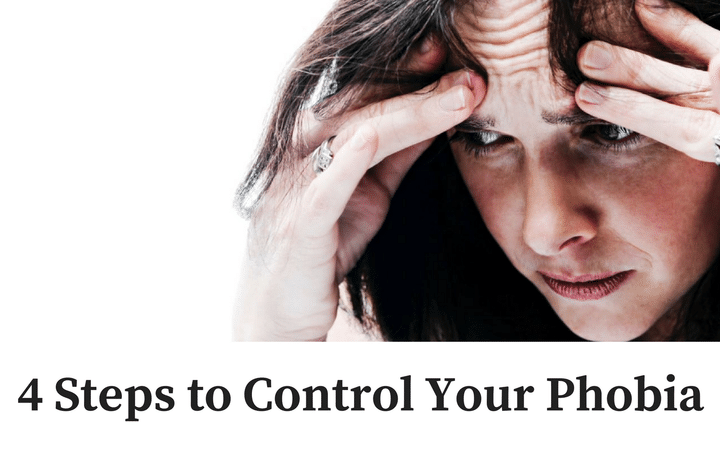4 Steps to Control Your Phobia!
Everybody has fears. But when is it a phobia and not simply a fear? There are certain symptoms to look out for such as difficulty breathing, feeling dizzy or light headed, trembling or shaking, feeling overwhelmed, fear of losing control, an intense need to leave the space etc. Phobias can be categorized into many different types like animal phobias (snakes, spiders, rodents etc.), natural environment phobias (heights, storms, water, dark etc.), situational phobias (enclosed spaces, flying, driving etc.) and blood-injection-injury phobias (illness, needles, medical procedures etc.).
It is important to know when it is time to seek help for your phobia. Some ways you could know are:
- You recognize the fear is unreasonable and excessive
- You start avoiding certain places and situations
- Your avoidance interferes with daily functioning
- You’ve had the phobia for at least 6 months
In the meanwhile, follow these steps to help control your phobia:
1. Make a list:
Make a list of all the situations related to your phobia that you are frightened of. For example, if you are afraid of flying, your list may include waiting at the security point, booking your ticket, watching other planes take off or land etc.
2. Create you fear ladder:
Arrange the items on your list from least to most scary. The first item can induce anxiety but not so much that it stops you from trying it. When creating this ladder, keep in mind what you want your end goal to be, this can help you breakdown the items easier.
3. Work your way down the ladder:
Start working your way down the ladder taking it one step at a time. Start with the first item on your list then only when you are comfortable with that should you move on to the next item. It is important to wait until the item you are on no longer gives you any anxiety before moving on the next one.
4. Practice:
It is important to practice this as often as you can. Repeated exposure to the fear will reduce the anxiety being felt. That being said, don’t rush through the steps. Go at a pace you are comfortable with and don’t move on until you on longer feel anxious in that situation.
While you are going through the items it is important to consciously breathe when anxious. When we are anxious our breathing gets hitched, our heart rate increases and we star sweating. When this happens, it is important to take some deep breaths and relax your whatever muscles are tensing. When your breathing normalizes again try going into the situation again to breathe deeply while doing so.



+1.svg)
